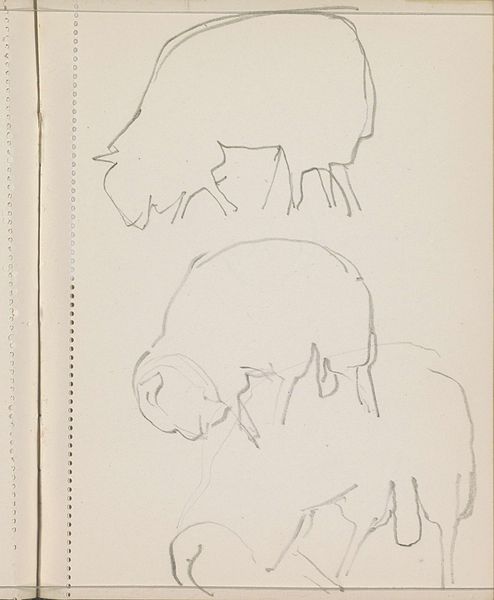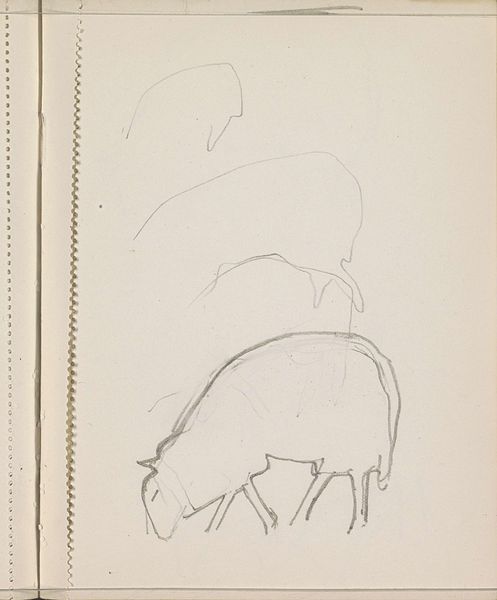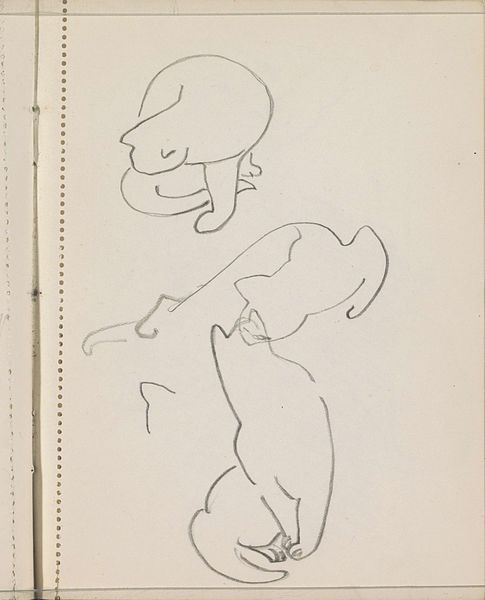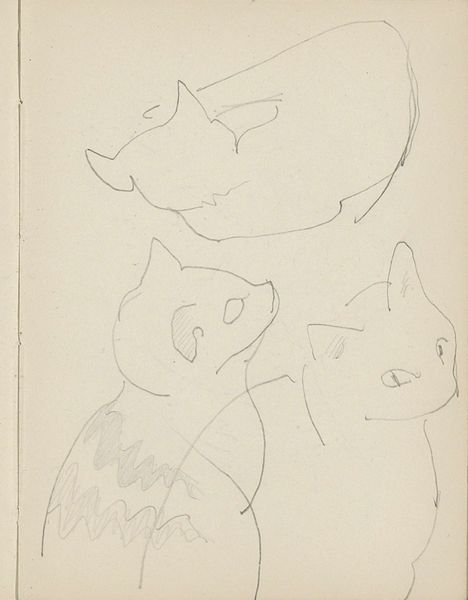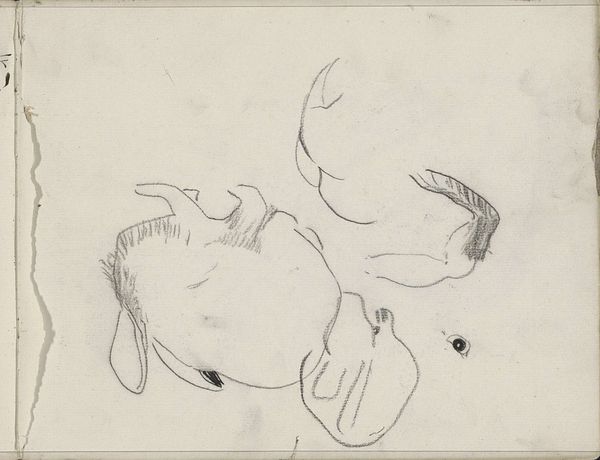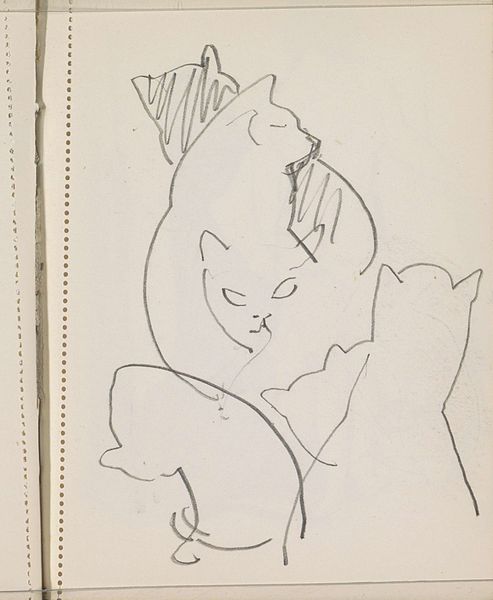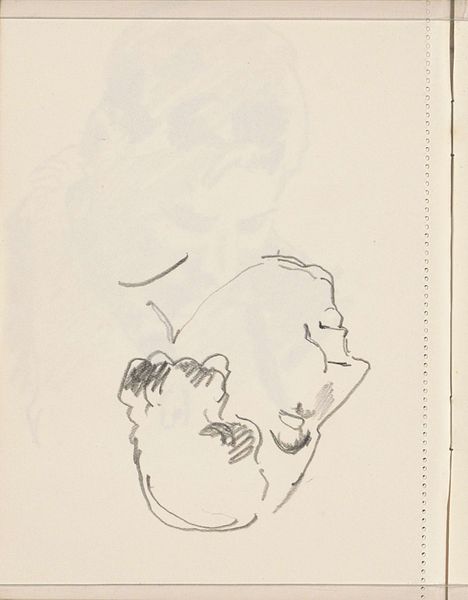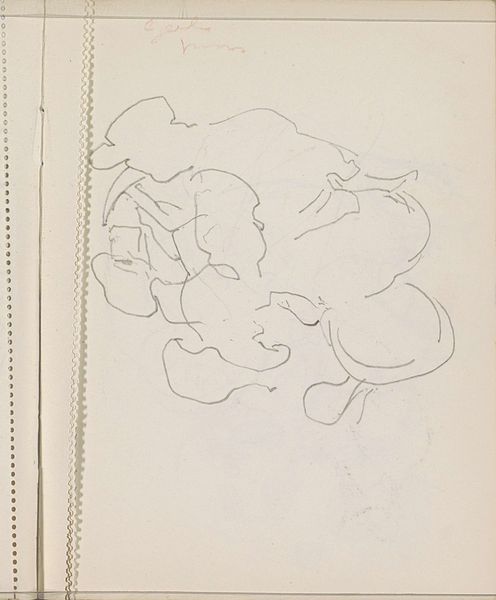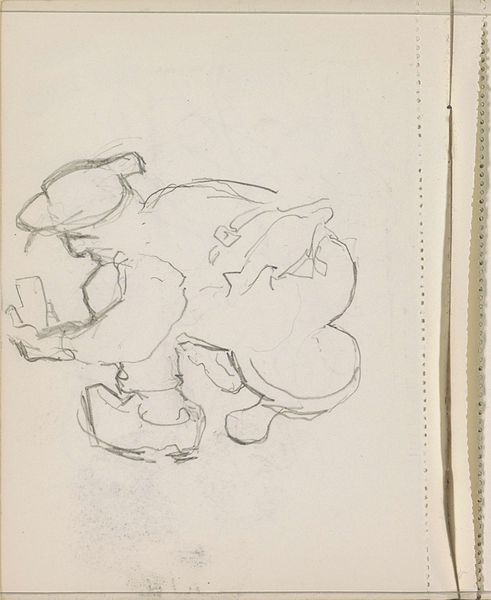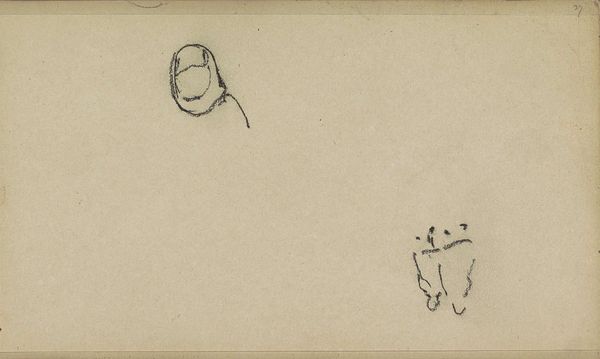
drawing, paper, pencil
#
drawing
#
animal
#
landscape
#
paper
#
form
#
sketch
#
pencil
Copyright: Rijks Museum: Open Domain
Editor: So, this drawing is called "Schapen," or "Sheep," created sometime between 1906 and 1945, and it’s just pencil on paper. It almost feels like a child's simple rendering. What do you see in this collection of forms? Curator: Well, beyond the deceptively simple outlines, I see potent symbolism tied to cycles of life and cultural memory. Sheep have long been associated with innocence, pastoral life, and religious sacrifice. Even the barest sketch, such as these sparse lines on paper, evoke centuries of meaning. Editor: Sacrifice? I didn't get that at all from this sketch. It just seemed like quick studies. Curator: Consider how sheep have been depicted across various cultures and religions, from early Christian art symbolizing Christ as the Lamb of God, to their presence in pagan rituals, as ancient offerings to the gods. Their docile nature often renders them symbols of guidance and dependence. Editor: So, the artist isn't just drawing sheep, they're evoking a cultural history? Curator: Precisely. And notice how the sheep are not fully realized, they are outlines; the sheep become vessels containing allusions to themes such as mortality, flock mentality, and the beauty of unassuming creatures. Do you observe any stylistic or historical resonances with pastoral imagery? Editor: Hmm, the sketch-like quality makes me think of artists quickly capturing a fleeting moment in nature, but also… that these aren't just generic sheep. Look at how individualized each pose is, maybe implying uniqueness even within a flock. Curator: Excellent observation! Even the lack of detail forces us to fill in the blanks with our own cultural understanding. The symbolism is powerful precisely because it is understated. Editor: It's amazing how much a seemingly simple sketch can carry with it. I will never look at a field of sheep the same way again! Curator: And that's precisely the power of art, isn't it? To see beyond the surface, to recognize the layers of history and symbolism embedded within even the simplest forms.
Comments
No comments
Be the first to comment and join the conversation on the ultimate creative platform.
